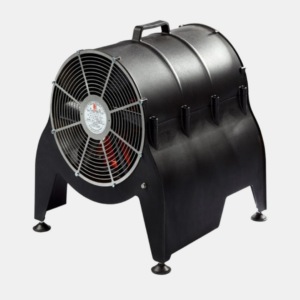The Dangerous Substances and Explosive Atmospheres Regulations 2002, better known as DSEAR regulations, places a responsibility on employers to conduct a DSEAR risk assessment and mitigate any identified risks.
According to the HSE, DSEAR assessments should be carried out in the presence of ‘dangerous substances’ including paints, varnishes, solvents, flammable gases (including LPG), machine and sanding dusts, food dusts, pressurised gases and corrosive substances.
A DSEAR assessment allows you to mitigate these risks, for instance with the right hazardous area equipment.
DSEAR Meaning
DSEAR refers to the presence of dangerous substances, including those listed above, in a potentially explosive atmosphere.
Employers must identify these risks, remove or control them, reduce the impact of any incidents, provide information and training to employees, and prevent ignition sources from entering high-risk areas.
DSEAR Risk Assessment Example
A DSEAR risk assessment should include:
- Details of dangerous substances and work activities that involve them
- Control and mitigation measures, and emergency plans and procedures
- Relevant illustrations including maps of different types of DSEAR zones
The DSEAR assessment should be kept on file and regularly reviewed, as well as being used to influence decisions relating to site safety, including PPE and general protection of employees.
FAQs about DSEARs
What is a DSEAR zone?
A DSEAR zone is an environment where there is a risk of explosion due to dangerous substances being handled in the vicinity. Hazardous area zones, including those used in DSEAR, can identify the level and likelihood of risk, as well as the substance – dust, gas, vapour etc – that creates the risk.
DSEAR vs ATEX zones
The zone classifications used in ATEX assessments can be used in DSEAR audits too, helping you to use the same maps and other information for a consistent risk mitigation strategy.
What is a DSEAR risk assessment?
A DSEAR risk assessment should identify dangerous substances, their involvement in work-related activities, and how those substances and activities could cause harm to humans including employees and others in the area.
Do I need a DSEAR?
You should assess risks from dangerous substances before starting work. If the risks are trivial, no further action is required. If non-trivial risks are identified, you should take mitigating action. Companies with five or more employees are required to keep a record of any significant findings.
How long does a DSEAR last?
It’s good practice to regularly review your DSEAR risk assessments, especially following any change of substances or working practices. Even without any changes, it’s sensible to schedule a new DSEAR assessment at least once every five years.





